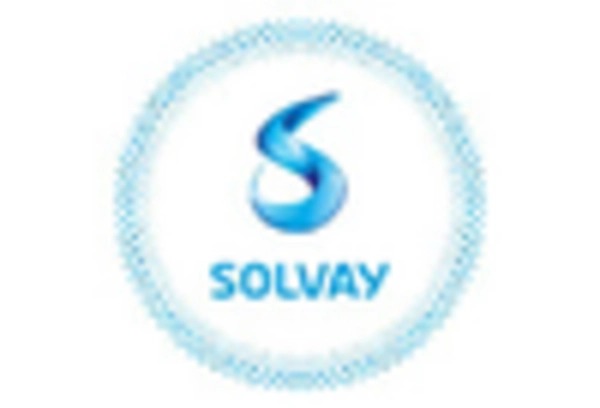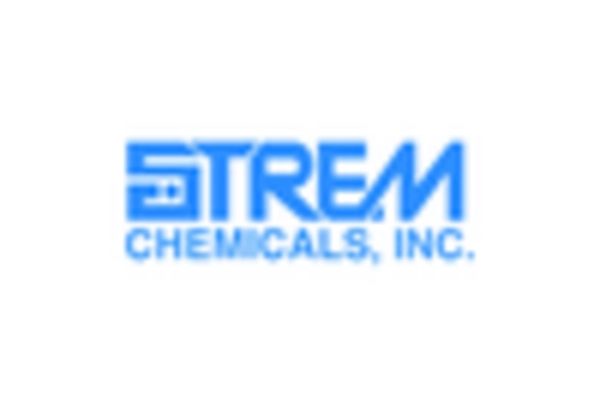Emerging Trends in Nanotechnology
Emerging trends in nanotechnology are significantly impacting the high purity-metal-organics market. The application of nanomaterials in various fields, including electronics, medicine, and materials science, is driving the demand for high purity-metal-organics. These materials are essential for producing nanoparticles with specific properties, which are increasingly utilized in advanced applications. The nanotechnology market is projected to reach $125 billion by 2027, with high purity-metal-organics playing a pivotal role in this growth. As researchers and manufacturers explore new possibilities within nanotechnology, the need for high purity materials is likely to increase, thereby enhancing the prospects for the high purity-metal-organics market.
Growth in Renewable Energy Technologies
The transition towards renewable energy technologies is influencing the high purity-metal-organics market positively. As the US aims to increase its renewable energy capacity, materials such as high purity-metal-organics are becoming crucial in the production of solar cells and batteries. The market for solar energy is projected to grow significantly, with estimates suggesting an increase to $200 billion by 2030. This growth is likely to drive demand for high purity-metal-organics, which are essential for enhancing the efficiency and longevity of solar panels. Additionally, the rise of electric vehicles is further propelling the need for high purity materials in battery production, indicating a robust future for the high purity-metal-organics market.
Technological Advancements in Manufacturing
The high purity-metal-organics market is experiencing a surge due to rapid technological advancements in manufacturing processes. Innovations such as improved synthesis techniques and enhanced purification methods are enabling the production of higher quality metal-organics. This is particularly relevant in sectors like electronics and pharmaceuticals, where purity levels are critical. The market is projected to grow at a CAGR of approximately 8% from 2025 to 2030, driven by these advancements. As manufacturers adopt cutting-edge technologies, the efficiency and yield of high purity-metal-organics production are likely to improve, further stimulating market growth. Additionally, the integration of automation and AI in production lines is expected to reduce costs and increase output, making high purity-metal-organics more accessible to various industries.
Rising Applications in Semiconductor Industry
The semiconductor industry is a significant driver for the high purity-metal-organics market. With the increasing demand for advanced electronic devices, the need for high purity materials has escalated. High purity-metal-organics are essential for the fabrication of semiconductors, as they ensure optimal performance and reliability. In 2025, the semiconductor market is anticipated to reach approximately $600 billion, with a substantial portion attributed to high purity materials. This growth is likely to propel the demand for high purity-metal-organics, as manufacturers seek to meet stringent quality requirements. Furthermore, the trend towards miniaturization and increased functionality in electronic devices necessitates the use of high purity materials, thereby reinforcing the market's expansion.
Increased Investment in Research and Development
Investment in research and development (R&D) is a key driver for the high purity-metal-organics market. As industries recognize the importance of high purity materials, companies are allocating more resources to R&D to innovate and improve product offerings. This trend is particularly evident in sectors such as pharmaceuticals and electronics, where the demand for high purity-metal-organics is critical. In 2025, R&D spending in the chemical sector is expected to exceed $20 billion, reflecting a commitment to enhancing material quality and performance. Such investments are likely to lead to the discovery of new applications and formulations, thereby expanding the market for high purity-metal-organics and fostering competitive advantages for companies.

















Leave a Comment